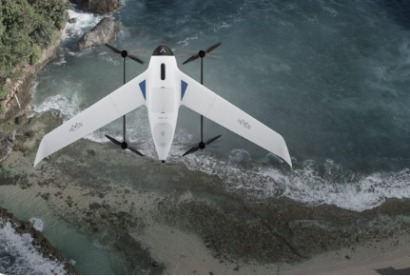
According to published reports, the companies want to provide an “offset” to Chinese dominance in the drone market.
The key will be the hydrogen fuel cells which, the companies say, will give their drones huge advantages when it comes to range and the amount of payload that can carry.
According to the companies, their new H2D250 drone can hit targets up to 180 miles away with a 22-pound warhead.
In an interview with Defense One magazine, Heven Drones CEO Benzion Levinson said the companies initially plan to produce about 1,000 of their H2D250 drones each month.
Eventually, Levinson said, they hope to increase production to 1,000 drones a day.
Research into hydrogen fuel cell powered drones has been going on for decades in the United States.
During the 1990s, NASA produced an evolutionary series of experimental unmanned aircraft powered by solar-powered and fuel cell-power systems.
Created by AeroVironment, Inc. under the auspices of NASA's Environmental Research Aircraft and Sensor Technology program, the experimental craft were intended to be the precursors of long-term, high-altitude vehicles to serve as atmospheric satellites.
In addition to performing atmospheric research, these vehicles were also intended to serve as communications platforms.
Also doing work in this area was the Office of Naval Research, which partnered with a number of other military and private sector entities to create hydrogen-powered solutions for battlefield needs.
According to the agency’s website, hydrogen fuel cells are well suited for low signature applications because they provide energy through an electrochemical reaction, so there are fewer moving parts and a much lower operating temperature relative to combustion engines.
In addition, because the byproduct of hydrogen fuel cells is water, use of the technology supports Pentagon initiatives to reduce carbon emissions.
The ultimate goal of this research, however, was to move hydrogen fuel cell technology out of the lab and into American industry where it is available for applications like those being developed by Mach Industries and Heven Drones.
Levinson told Defense One that as a result of all this past research, one pound of hydrogen, loaded into a fuel cell, can support roughly 10 hours of flight time.
In addition to increased range of flight, the latest generation of hydrogen fuel cells allows operators to run more advanced autonomy software on the drones, reducing the need for a human operator in a remote location to send instructions via communication channels that are vulnerable to cyberattacks.
HevenDrones has also developed hydrogen refueling stations that can be deployed to remote bases, reducing the need to rely on vulnerable resupply lines.
There is one challenge, however, that research alone has not been able to overcome.
As it stands now, China is still the United States’ primary source for the critical materials that make up the batteries.
The new partnership then has the additional goal of developing a U.S.-based supply chain for drones and all of their component parts.

